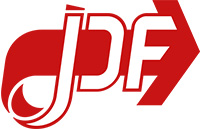The Job Definition Format (JDF) is an industry standard designed to simplify information exchange between different applications and systems in and around the graphic arts industry. To that end, JDF builds on and extends beyond pre-existing partial solutions, such as CIP3's Print Production Format (PPF) and Adobe Systems' Portable Job Ticket Format (PJTF). It also enables the integration of commercial and planning applications into the technical workflow. JDF joins the growing number of standards based on XML, ensuring maximum possible portability between different platforms and ready interaction with Internet-based systems. The JDF Specification defines the entire print production process as well as the print product life cycle in a very detailed manner. The JDF specification is the master document for system integration and product description.
JDF is a comprehensive XML-based file format and proposed industry standard for end-to-end job ticket specifications combined with a message description standard and message interchange protocol.
- JDF is designed to streamline information exchange between different applications and systems.
- JDF is intended to enable the entire industry, including media, design, graphic arts, on-demand and e-commerce companies, to implement and work with individual workflow solutions.
- JDF will allow integration of heterogeneous products from diverse vendors to create seamless workflow solutions.
The most prominent features of JDF are:
- Ability to carry a print job from genesis through completion. This includes a detailed description of the creative, prepress, press, postpress and delivery processes.
- Ability to bridge the communication gap between production and Management Information Services (MIS). This ability enables instantaneous job and device tracking as well as detailed pre- and post-calculation of jobs in the graphic arts.
- Ability to bridge the gap between the customer's view of product and the manufacturing process by defining a process-independent product view as well as a process-dependent production view of a print job.
- Ability to define and track any user-defined workflow without constraints on the supported workflow models. This includes serial, parallel, overlapping, and iterative processing in arbitrary combinations and over distributed locations.
- Ability to do so (1, 2, 3, and 4) under nearly any precondition.

